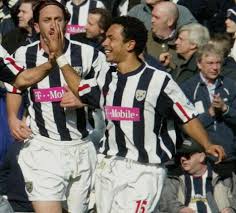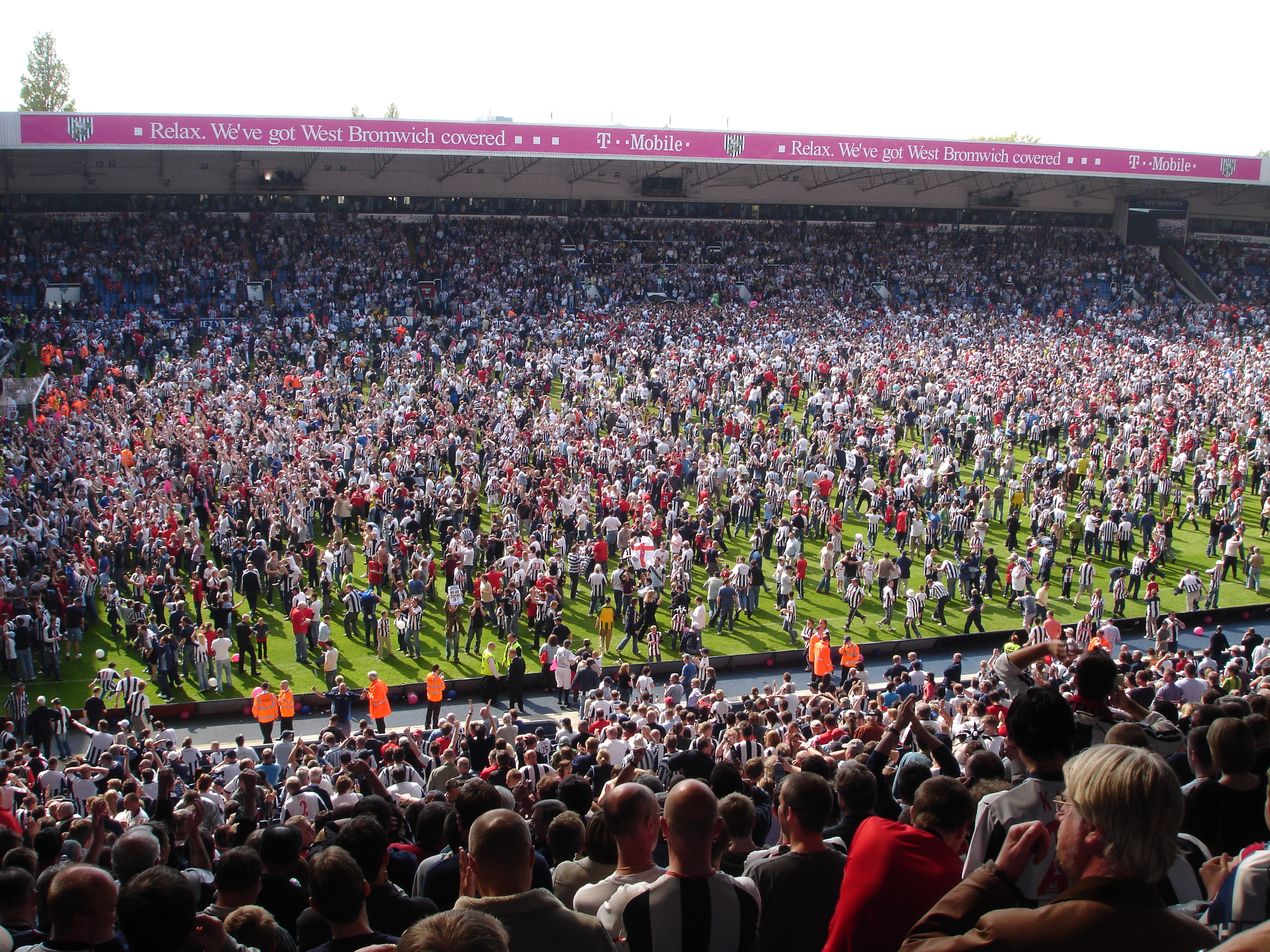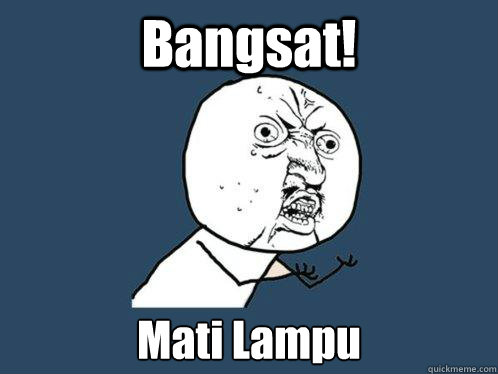English Premier League competition of 2004/2005 season
marked several highlights in the history of British football. After 50 years of
waiting, Chelsea
finally topped the league table at the end of the season. It was a quite of an achievement
for The London Blues under José Mourinho on his first season in English
football. A couple of weeks before claiming the league title, they won the
league cup.
On the other side of London,
Arsenal had to face the fact that not only had they failed to defend their
title, but also that Man. United broke their 49 unbeaten run from the previous
season. But at least they managed to secure the FA Cup title (which is still their
last ever major silverware to date) by beating the same unbeaten-record-breaking side at the
final, which led to a title-less season for Sir Alex’s boys.
But the most interesting part of that season for me, was the
story of “The Great Escape.”
 |
| tower.com |
For the first time in Premier League history, there were no
teams yet mathematically relegated on the last fixtures of the season. It was a
battle royale for 4 teams at the bottom part of the table, whereas only 1 team
could survive the relegation. At week 38, Norwich
City was on the 17th spot
(the last safe spot from relegation) with 33 points, followed by Southampton
and Crystal Palace with 32 points on 18th and 19th accordingly, while West Bromwich Albion was on the least
advantaged position, 20th with only 31 points.
Norwich had to face Fulham
away to Craven Cottage; Crystal
Palace went to The Valley
against Charlton Athletic. Compared with other contenders, Southampton had the
toughest challenge at St. Mary’s to face Man. United, while West Brom’s chance
to survive was only to beat Portsmouth
at their ground The Hawthorns.
With those fixtures, each contending teams relied on each other’s results
to survive. The matches were being held simultaneously, which made it more
exciting to follow.
On the last 90 minutes of the season, the bottom table had a
lot of up-and-down movements. Surprisingly, Southampton
took the holeshot and went to the safe zone on the 10th minute following
John O’shea’s own goal. At almost the same time, Norwich went down 0-1.
10’
17. Southampton (35 points, GD -19)
18. Norwich (33
points, GD -30)
19. Crystal Palace (32 points, GD -21)
20. West Brom (31 points, GD -23)
Southampton’s lead didn’t
last long, though. Darren Fletcher scored the equalizer at 19th
minute. At The Valley, Charlton went ahead of Crystal Palace
with a goal by Bryan Hughes. While at Craven Cottage, Papa Bouba Diop made it more
difficult for Norwich
as he scored the second goal for Fulham at 35th minute. At the first
half break, by the preferred regulation of goal difference in English Premier
League, Southampton led the survival.
45’
17. Southampton (33 points, GD -20)
18. Norwich (33
points, GD -31)
19. Crystal Palace (32 points, GD -21)
20. West Brom (31 points, GD -27)
Along came the second half, the contest had gotten more
exciting. Zat Knight made the situation worse for Norwich as he scored the third goal for
Fulham at 54th minute. West Brom’s
hope was raised at 58th minute when Geoff Horsfield took The Baggies
to lead. Dougie Hall scored an equalizer for Crystal
Palace at almost the same minute with Horsfield's goal and
aligned 3 teams with 33 points at the bottom three, while West
Brom jumped over them to the safe zone.
58’
17. West Brom (34 points, GD -26)
18. Southampton (33 points, GD -19)
19. Crystal Palace (33 points, GD -21)
20. Norwich (33
points, GD -32)
At the 63rd minute, Ruud van Nistelrooy brought
United ahead of Southampton and made the Saints’
task even more difficult. Destiny turned its face to the Eagles at 71st minute. Andy Johnson netted his 21st goal of the season from the
spot and took Crystal
Palace ahead of Charlton.
Down by 3 goals made Norwich’s
spirit broke down even deeper. At 72nd minute, they suffered another
goal from Steed Malbranque and made it 0-4 for the Canaries. At this point,
Southampton bumped into the bottom of the table, while Crystal Palace
would had survived.
72’
17. Crystal Palace (35 points, GD -20)
18. West Brom (34 points, GD -26)
19. Norwich (33
points, GD -33)
20. Southampton (32 points, GD -21)
 |
| bbc.co.uk |
The last 15 minutes of the season was a heart pumping moment
for Southampton, Crystal Palace and West Brom.
Kieran Richardson scored another goal for The Baggies and brought a
seemingly-comfortable 2-0 lead against Portsmouth.
At St. Mary’s, Southampton went all out and
put an all-offensive formation. Crystal
Palace lost their focus
and let Jonathan Fortune equalized for Charlton at 82nd minute.
While Norwich
seemed to raise the white flag after Fulham’s fifth goal put the Canaries into
their cage.
82’
17. West Brom (34 points, GD -25)
18. Crystal Palace (33 points, GD -21)
19. Norwich (33
points, GD -33)
20. Southampton (32 points, GD -21)
West Brom were only trying
to secure the 2-0 result. Southampton and Crystal Palace
were struggling and called an all-out attack on their opponents to score more
goals. At the last minute of the season, the results at The Hawthorns, The Valley, and St. Mary’s
stood still, while Craven Cottage celebrated one last goal for 6-0 victory.
Full time
17. West Brom (34 points, GD -25)
18. Crystal Palace (33 points, GD -21)
19. Norwich (33
points, GD -35)
20. Southampton (32 points, GD -21)
It was a joyful moment at The Hawthorns. West
Bromwich fans massively invaded the pitch as if they were the
league’s champions! Mission
impossible became mission accomplished for Bryan Robson’s boys. Their
desperation has turned into delight after 90 minutes of football.
 |
The Great Escape called for massive pitch invasion
commons.wikimedia.org |
Before the referee blows the final whistle, anything can happen
in football. Joy can turn into sorrow, and vice versa. The point is, we should
not lose hope if the situation is not on our advantage. Pull the best out of us
to turn disadvantage into a memorable moment.
And that’s the story of the 2005 Baggies’ Great Escape.



.jpg)





.jpg)
.jpg)
.jpg)
.jpg)
.jpg)
.jpg)
.jpg)
.jpg)
.jpg)


.jpg)
.jpg)
.jpg)
.jpg)
.jpg)
.jpg)

.jpg)
.jpg)
.jpg)





